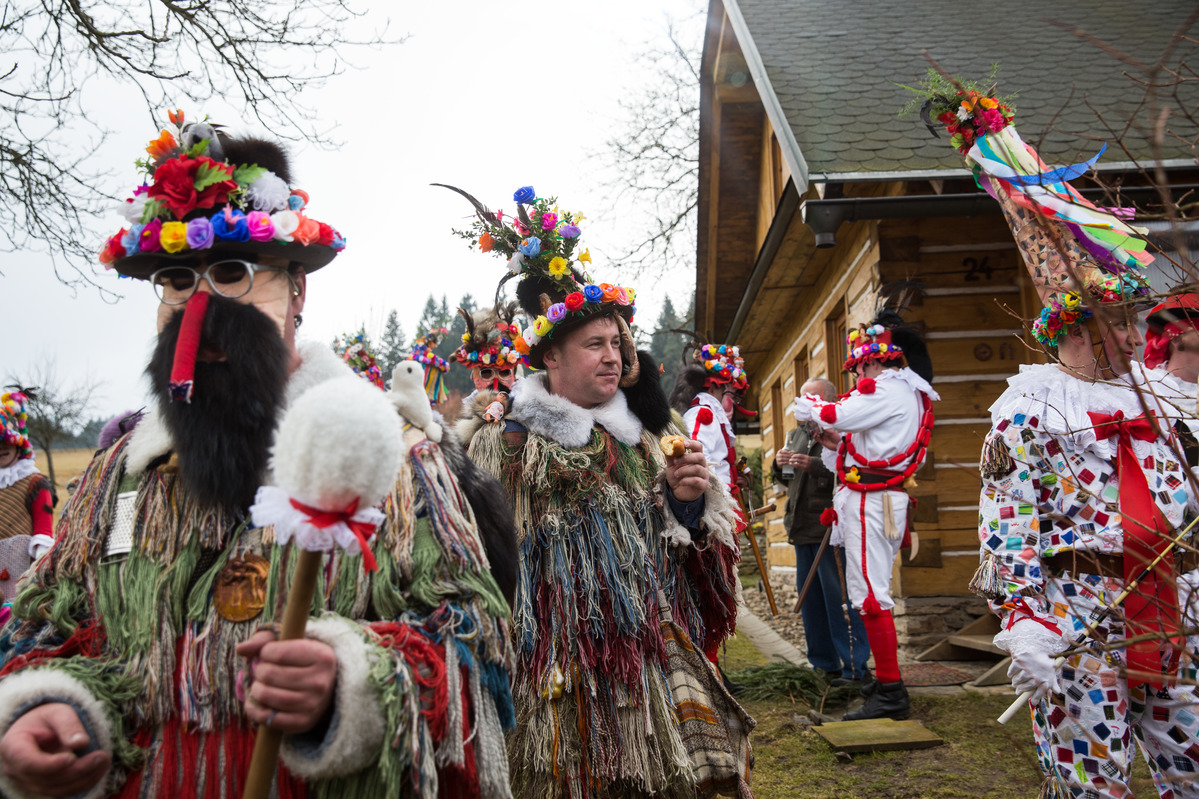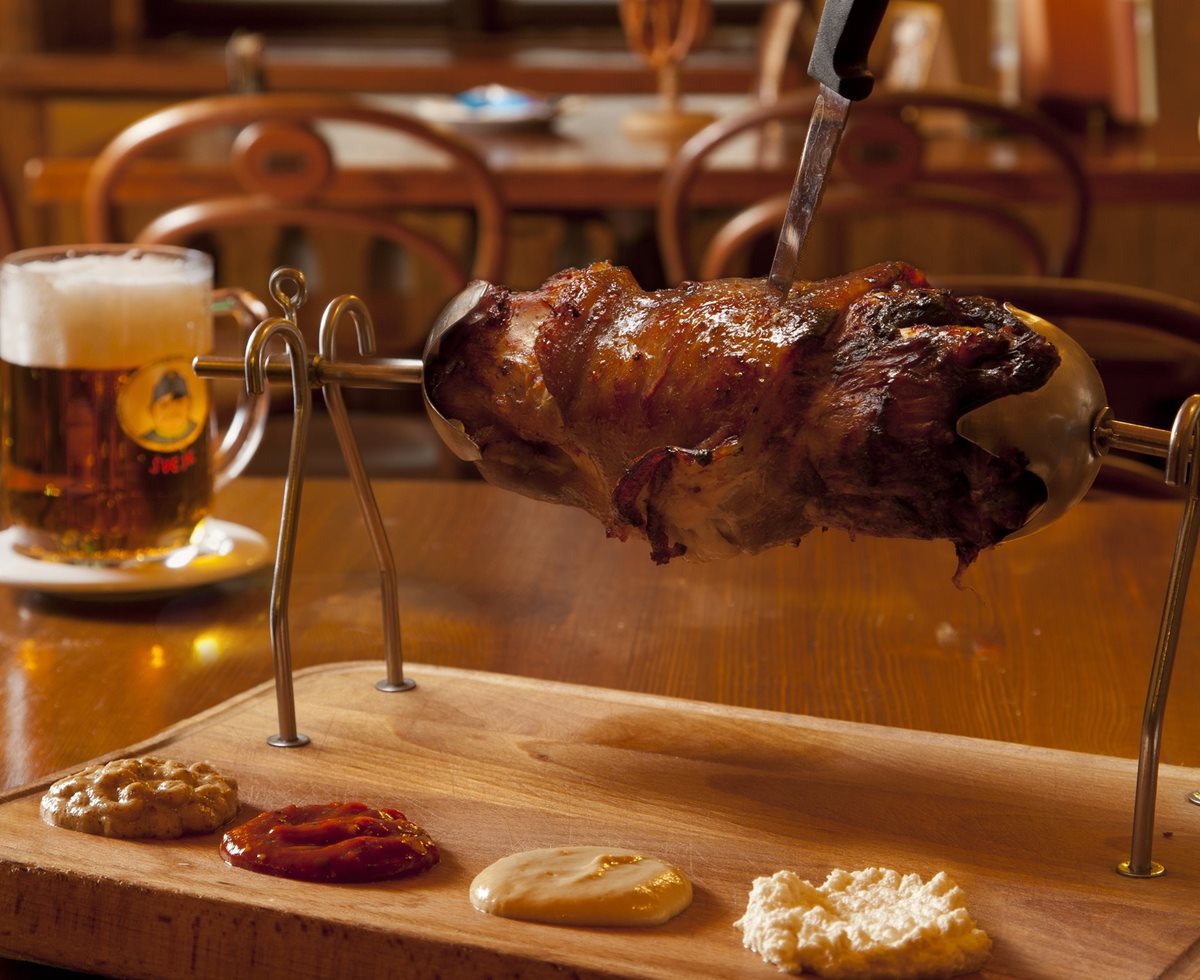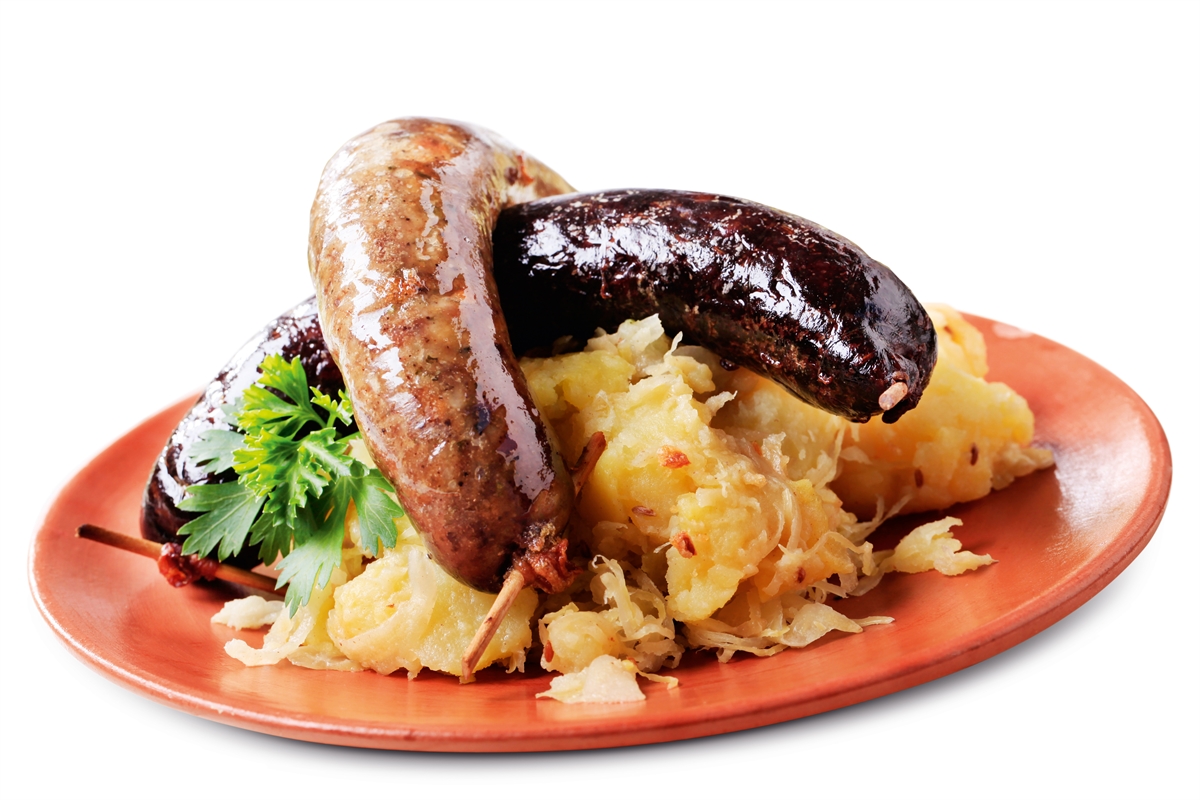Shrovetide, a period shortly after the beginning of a new year, can be described as a time of cheer and entertainment, a time when there are no rules and people have fun. In Czechia, it is a time of processions and festivals with feasts full of fatty meat and sweets. This holiday dates back to pagan times, but today it is a period that starts after the Epiphany (6 January) and goes on until Ash Wednesday (6 weeks before the Christian Easter holiday). Ancient ancestors used to pay tribute to the sun, fertility and strength during this time. It was a period of joy as the days were getting longer and a celebration of early spring. After the birth of Christianity, it became a carnival that preceded Lent. Where can you enjoy the carnival and what to eat?
Carnival Processions with a UNESCO Hallmark
As we have said before, the feast during the Shrovetide is linked with a ceremonial masquerade procession accompanied by music, dance and glee, walking through the towns and villages in Bohemia and Moravia. The carnival processions have pretty much been preserved in their original form in the Hlinecko region in East Bohemia, namely in Hamry, Studnice, Vortová and Blatno. The character and form of the masks are the same as a hundred years ago; thanks to their originality, the carnival processions were inscribed in the List of Intangible Cultural Heritage by UNESCO and the Betlém conservation area in Hlinsko even has a special museum.
Join the Carnival
Would you like to take part in a Shrovetide carnival? No problem. Several interesting options are available this year. You can go check out the Letná Carnival in Prague. The carnival procession starts on Strossmayer Square (Prague 7) after noon on 20 January and it will bring music, theatre performances, dance shows, as well as the traditional carnival costumes. The carnival also includes a programme at the National Technical Museum and at the National Museum of Agriculture. But that is not everything: if you come dressed up, you can visit the museums for free!
Another interesting carnival in a beautiful historical setting takes place in Český Krumlov in South Bohemia. The traditional carnival festivity must have some music, singing and tasty food. You can taste some pork specialties from the traditional pig-slaughtering in the Pivovarská restaurant on 27 January. The Krumlov Carnival will end with a procession of masks on 13 February.
How about something more rustic? An orthodox village carnival with uninterrupted historical roots? The traditional Shrovetide door-to-door procession inscribed by UNESCO takes place in the Veselý Kopec Open-Air Museum in East Bohemia. What can you expect there? On 27 January the local folklore groups perform the door-to-door procession as it has been done for hundreds of years. There is one more nearby Shrovetide procession that is also inscribed by UNESCO. The procession in the village of Hamry in East Bohemia, one of the villages where the custom of old Bohemian masquerade has been preserved, will walk through the village on 27 January. The door-to-door procession has been spontaneously taking place in an almost unchanged form for generations, with traditional Shrovetide masks. You won’t usually find women and children in the procession; it is mostly men who dress up.

And where to go in Moravia? You can visit Olomouc on 27 January. You can look forward to a carnival fair, pork and other Shrovetide specialities, Moravian folklore ensembles, ice sculptures if the weather permits, and a whirl of Shrovetide masks. Or go to Rožnov pod Radhoštěm where the Little Wooden Town also comes to live with Shrovetide customs on Saturday, 3 February.
Traditional feast
In the past, the fun used to start during Shrove Sunday, which is the last Sunday before Ash Wednesday, with a rich lunch and feast for the wider family. The meals that were eaten definitely could not be called healthy, quite the contrary. The tables were laid with a lot of fatty meat, and sweets were also a necessary part of the carnival menu. With the long fasting during Lent before Easter in mind, everyone enjoyed a bellyful of exuberant cheer, singing and dancing – and naturally, food and drinks.
Pork specialties – hog killing
It is not a coincidence that it was the time of many a hog killing, which is still a living tradition in the Moravian countryside when family and friends meet to kill and process a whole pig in a single day. Not so long ago, people would have their own pig, fatten it up over the year, and the butcher would come and kill it at the break of day. However, a simpler method has been taking over this tradition in recent years – people order a pre-fattened pig from a farmer. It takes a whole day to process the meat, from the nose to the tail, and make specialties such as white and black pudding (something like kielbasa), boiled belly pork, collared pork, crackling, a special hog-killing soup or goulash. In short, nothing gets thrown away, but everything gets processed to the very last bit. The freezing weather used to be ideal for a hog feast as there were no refrigerators and freezers in the past, and butchers were extremely busy at that time. Beer and homemade brandy, usually plum brandy, are served throughout the day to keep everyone warm!
The hog-killing feast is not just a specialty of rural family meetings, you can enjoy it at many restaurantsthat focus on traditional Czech cuisine. They offer a full hog-killing menu – belly pork soup, collared pork, white and black pudding, sausage meat, roasted knee or goulash.
Collared pork is usually available in traditional pubs as a beer snack all year round. This pork specialty contains different types of pork and other parts of the pig (such as the liver, tongue, skin or feet). It consists of small pieces of meat in aspic made from cooked connective tissue. It is usually served with onion and vinegar.
Carnival sweets
The carnival menu also contains a lot of different sweets. The most common delicacy are doughnuts fried in ghee. The sweet yeast dough from white flour is filled with homemade jam, and then it is fried until golden and sprinkled with sugar. Other sweets are baked or fried in different regions, such as angel wings pastry, biscuits, sweet rolls filled with ground walnuts, or pies with cottage cheese, poppy seeds or plum butter.
Angel wings – recipe
These traditional crisp pastries used to be prepared by our grandmothers and great-grandmothers and are today mostly made in Moravia. But they are definitely worth a try; the pastries are delicious!Ingredients: 300 g all-purpose flour, a pinch of salt, 50 g butter, 20 g lard, 40 g caster sugar, 3 egg yolks, 2 tablespoons of lemon juice, zest of 1 lemon, 7 tablespoons of sour cream, 1 tablespoon of rum, ghee for frying.
Make crumble from the flour and cold butter with lard. Mix the cream with the sugar, salt, lemon juice, lemon zest, rum and egg yolks, mix and add to the crumble. Work out a smooth dough, wrap it in cling wrap and let it rest in the fridge for at least an hour. Roll out the rested dough into a thin layer, about 3 mm. Cut out traditional rectangular shapes with a cross in the middle. Heat the fat in a tall saucepan and gradually fry the angel wings on both sides until golden. Let them rest on a paper towel to drain away the fat for about a minute and then coat them with vanilla sugar.











-(1).jpg?width=1920&height=1204&ext=.jpg)



